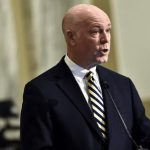Missoula, MT — On Monday, the Missoula City Council voted unanimously to adopt the Our Missoula 2045 Land Use Plan, a comprehensive framework designed to guide the city’s growth and development over the next two decades. The long-awaited plan, developed over more than two years, will serve as a blueprint for increasing housing density across the city and addressing Missoula’s growing housing crisis.
The plan is a direct response to the city’s evolving needs for affordable housing, climate resilience, and equitable development. Council members, city staff, and public participants all played pivotal roles in crafting the policy, with the final document reflecting thousands of hours of collaboration and community input.
Council President Amber Sherrill praised the hard work that went into the plan’s creation, acknowledging both staff and community members for their contributions. She called the adoption of the plan “a big step forward” and emphasized its importance in ensuring Missoula’s accessibility for all residents moving into the future.
The new framework comes in response to Missoula’s expected population growth, which is projected to increase by 1.39% annually over the next 20 years, adding an estimated 37,000 people to the area by 2045. To meet the demand for housing, the city will need between 22,000 and 27,500 additional housing units. This includes addressing a current deficit of up to 3,700 homes and ensuring a healthy vacancy rate of 5-8%.
Rather than relying on traditional zoning categories, the Our Missoula 2045 Land Use Plan introduces innovative “place types” and “street types” that take into account factors such as traffic volume, building form, and parcel size. These classifications are designed to accommodate more development, with most residential areas now allowing at least two units per parcel, a requirement under new state law. All residential zones also allow for small-scale commercial development.
The land use plan is rooted in principles of equity and affordability, addressing the city’s need for diverse housing options for all income levels. The updated policy reflects a shift toward creating more inclusive, mixed-use neighborhoods that offer opportunities for growth while also responding to the community’s desire for affordable living spaces.
Council member Mike Nugent called the plan “a great first step,” acknowledging that while some may feel the plan pushes too far and others may wish it went further, the document successfully captures a balanced vision for the city’s future. He noted that Missoula’s ongoing housing crisis requires urgent action to make the city more accessible, particularly for those struggling to find affordable homes despite working in the community.
Council member Daniel Carlino echoed concerns about the plan underestimating the amount of housing needed, expressing his hope that Missoula can move beyond relying solely on market-driven housing solutions. He advocated for more investment in subsidized and truly affordable housing, cautioning that without such measures, the city could continue to face a housing crisis for years to come.
One of the most praised aspects of the process was the extensive community engagement, with the city receiving approximately 1,000 comments on the draft plan. Public feedback helped shape several key amendments, including adjustments to language around parking requirements and the inclusion of certain areas in the plan’s place type designations.
Notably, the council made two significant changes in response to concerns from Common Good Missoula, a nonprofit that supported community outreach efforts. The first was the removal of language from the “limited urban residential” place type description, which had referenced a “heavy reliance on cars.” The second involved reclassifying part of the Rattlesnake neighborhood from “urban residential low” to “urban residential high,” reflecting the area’s potential for higher-density development.
Some concerns, however, persisted. A few residents from East Missoula voiced opposition to the plan’s higher density designations, particularly the lack of direct outreach to their neighborhood regarding its inclusion in the plan. Despite these concerns, city officials emphasized that East Missoula’s designations were aligned with the county’s growth plans and would not trigger immediate zoning changes. The city is required by state law to include East Missoula and other outlying areas in its long-term growth plans, especially those in the city’s utility service area.
The adoption of the Our Missoula 2045 Land Use Plan represents the first major step toward modernizing the city’s development strategy. City officials have already outlined plans to begin revising Missoula’s development code, which will consolidate and simplify the current code, making it easier for developers, staff, and residents to navigate. The code will be updated in alignment with the new land use plan, though these changes will require further approval by the City Council.
As the city moves forward with the implementation of this plan, Council members emphasized the importance of continued dialogue with residents and stakeholders to address the complex issues of housing affordability, density, and community character.
“This is a big paradigm shift,” said Council member Gwen Jones. “We’re asking a lot of the community in return for the growth we know is coming. It’s one thing to discuss this in theory, but it’s another thing entirely to see these changes in our neighborhoods. We’re trying to be as thoughtful as possible, but expanding density will require broad community support.”
ProHousing Missoula, a coalition of local organizations advocating for policies that increase housing options, expressed support for the adoption of the plan. Brittany Palmer, executive director of the North Missoula Community Development Corporation, hailed the decision, noting that the new plan would help preserve Missoula’s character by legalizing missing-middle housing and promoting equity across the city’s neighborhoods.
With the passage of the Our Missoula 2045 Land Use Plan, the city has set the stage for significant changes in its growth patterns and housing strategy over the next two decades. While challenges remain, particularly around ensuring affordable housing and managing the concerns of residents in higher-density areas, the plan represents a critical step toward addressing Missoula’s housing shortage and creating a more equitable, sustainable city for future generations.



